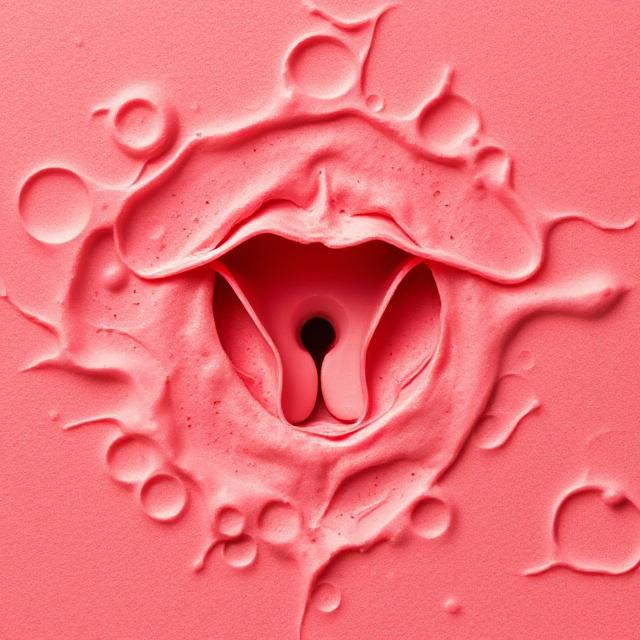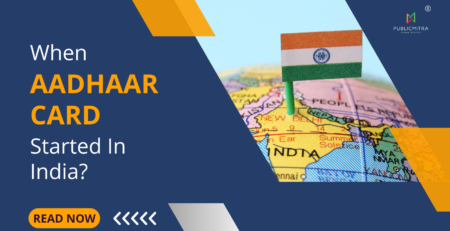Does Ovulation Cause Stomach Pain? Understanding Ovulation Cramps, Symptoms & Relief
🌷 1. Introduction: Understanding Ovulation and Pain
Every month, women experience a complex cycle controlled by hormones — and ovulation is one of its most important phases. Ovulation occurs when a mature egg is released from the ovary, usually around the middle of a woman’s menstrual cycle.
For many women, this process goes unnoticed. But for others, it comes with a distinct discomfort or stomach pain — often described as a dull ache, twinge, or sharp pain in the lower abdomen.
So, does ovulation cause stomach pain? Yes — for some women, it absolutely can. The phenomenon is medically known as “Mittelschmerz”, a German word meaning “middle pain.”
This pain is generally harmless and short-lived, but understanding its causes, duration, and when to seek help is essential for managing reproductive health effectively.
🩺 2. What Happens During Ovulation?
To understand the cause of ovulation pain, it helps to first understand what’s happening in your body during this phase.
A typical menstrual cycle lasts about 28 days, although it can range between 21 and 35 days. Ovulation usually occurs 14 days before your next period — so for a 28-day cycle, that’s around day 14.
During ovulation:
- Several follicles (small sacs in the ovaries) start to mature.
- One follicle becomes dominant and continues to grow.
- A surge in luteinizing hormone (LH) triggers the follicle to rupture.
- The mature egg is released into the fallopian tube, awaiting fertilization.
This rupture — and the resulting hormonal changes — can lead to mild inflammation, irritation, or pressure in the lower abdomen, resulting in the pain some women experience.
🌼 3. What Does Ovulation Pain Feel Like?
Ovulation pain varies from woman to woman, but common sensations include:
- Dull, mild ache on one side of the lower abdomen
- Sharp, sudden twinge or stabbing pain
- Cramping similar to menstrual cramps but milder
- Pressure or bloating in the pelvic area
- Low back pain in some cases
Typically, the pain occurs on one side of the body — corresponding to the ovary releasing the egg. The side may alternate each cycle, depending on which ovary ovulates that month.
🔍 Duration:
Ovulation pain usually lasts from a few minutes to a few hours, but in some cases, it can persist for up to 1–2 days.
🌙 4. Why Does Ovulation Cause Stomach Pain?
The exact reason behind ovulation-related stomach pain isn’t entirely understood, but several physiological factors can contribute:
🧬 a) Follicle Rupture
When the mature follicle breaks open to release the egg, it can cause a small amount of internal bleeding or irritation in the ovary’s surface — leading to localized pain.
💧 b) Fluid or Blood Leakage
After the follicle ruptures, the released fluid or trace blood may irritate the abdominal lining (peritoneum), triggering mild cramps or discomfort.
⚖️ c) Hormonal Changes
Estrogen peaks just before ovulation, and then progesterone rises afterward. These fluctuations can affect blood flow and muscle contractions in the reproductive organs, sometimes causing temporary pain.
💢 d) Ovary Swelling
The ovary may become slightly enlarged before releasing the egg, adding to the feeling of heaviness or discomfort in the pelvic region.
🔄 5. Is Ovulation Pain Normal or a Sign of a Problem?
In most cases, ovulation pain is completely normal and nothing to worry about. It’s simply a sign that your body is functioning correctly and ovulating as expected — often seen as a natural fertility signal.
However, if the pain is severe, prolonged, or accompanied by other symptoms like fever, heavy bleeding, or nausea, it might indicate an underlying medical issue such as:
- Ovarian cysts
- Endometriosis
- Pelvic inflammatory disease (PID)
- Ectopic pregnancy (if conception has occurred abnormally)
If you experience intense or recurring pain every cycle, it’s wise to consult a gynecologist for an evaluation.
🌺 6. Where Exactly Is Ovulation Pain Felt?
Ovulation pain typically occurs in the lower abdomen or pelvic region, often on one side only.
- Pain on the right side may indicate ovulation from the right ovary.
- Pain on the left side usually points to the left ovary.
This alternating pattern occurs because ovulation tends to switch sides each month — though sometimes one ovary can release eggs for several cycles in a row.
⏱️ 7. When Does Ovulation Pain Happen?
Pain usually occurs mid-cycle, roughly 10–14 days before your next period.
It often aligns with the LH surge — when your body is at peak fertility.
Some women may also experience mild spotting or increased cervical mucus during this time, which are additional signs that ovulation is occurring.
💡 8. How Long Does Ovulation Pain Last?
The duration can vary:
- For some women: a few minutes or hours
- For others: 1–2 days of intermittent cramps
If the pain lasts longer than two days or becomes progressively worse, it may not be normal ovulation pain — and medical advice should be sought.
🌿 9. How to Relieve Ovulation Pain Naturally
If ovulation pain is mild, you can manage it at home using simple remedies.
✅ a) Apply Heat
A warm compress or heating pad on the lower abdomen can help relax muscles and reduce cramps.
💊 b) Pain Relief Medication
Over-the-counter painkillers like ibuprofen or naproxen can ease discomfort (consult a doctor before regular use).
🧘 c) Gentle Exercise
Light stretching, yoga, or walking can increase blood flow and relieve tension in the pelvic muscles.
💧 d) Stay Hydrated
Drinking plenty of water reduces bloating and inflammation.
🌿 e) Relaxation Techniques
Meditation, deep breathing, or warm baths can help ease hormonal and muscular tension.
🔬 10. How to Tell If Your Stomach Pain Is Due to Ovulation
Since abdominal pain can be caused by many factors, it’s helpful to identify ovulation-related pain based on timing and symptoms.
Checklist for Ovulation Pain:
- Occurs mid-cycle (10–14 days before your period)
- One-sided pain or cramp
- Mild to moderate intensity
- Associated with increased cervical mucus
- Lasts less than 2 days
- No severe bleeding, fever, or nausea
If these match, your pain is likely Mittelschmerz (ovulation pain).
💕 11. Does Ovulation Pain Affect Fertility or Pregnancy Chances?
Ovulation pain does not negatively affect fertility. In fact, it’s often considered a natural indicator of your fertile window.
Women who experience regular ovulation pain can use it as a guide to predict when ovulation is happening — improving the chances of conception.
🔹 Fertility Tip:
The best time to try for pregnancy is one to two days before ovulation and on the day of ovulation itself.
📈 12. When to See a Doctor
While mild ovulation pain is normal, you should seek medical attention if:
- Pain lasts longer than 48 hours
- Pain is severe or worsening each month
- You experience nausea, vomiting, or dizziness
- Pain is accompanied by fever or unusual discharge
- You suspect pregnancy or an ovarian cyst rupture
Your doctor may recommend ultrasound scans, blood hormone tests, or pelvic exams to rule out other causes.
⚕️ 13. Conditions That Mimic Ovulation Pain
Some gynecological or abdominal issues can feel similar to ovulation pain but may require treatment:
- Appendicitis: Sharp pain on the right side, often with nausea and fever.
- Ovarian cysts: Persistent pain or bloating, unrelated to cycle timing.
- Endometriosis: Chronic pelvic pain that worsens during menstruation.
- Pelvic infection (PID): Pain with fever and discharge.
- Irritable Bowel Syndrome (IBS): Digestive-related abdominal cramps.
Always track your symptoms and consult a gynecologist if pain patterns change.
🧠 14. Can You Prevent Ovulation Pain?
If ovulation pain interferes with your daily life, prevention may be possible through hormonal birth control methods.
Oral contraceptive pills, patches, or IUDs can suppress ovulation, preventing the monthly egg release that triggers pain.
However, this is only recommended under medical supervision, as hormonal treatments have their own side effects.
🌸 15. Does Ovulation Pain Mean You Are Ovulating Normally?
Yes — in most cases, ovulation pain indicates a healthy and regular ovulation cycle.
It’s a natural response to hormonal and physical changes in your ovaries. Many fertility specialists even consider ovulation pain a positive fertility sign.
🩸 16. What If Ovulation Pain Is on Both Sides?
Occasionally, women may feel ovulation pain on both sides of the abdomen in the same cycle.
This could mean:
- Both ovaries released eggs (a rare event called bilateral ovulation)
- Referred pain from one side
- Or non-ovulation-related causes (like gas or mild intestinal discomfort)
🌕 17. Medical Treatments for Severe Ovulation Pain
If ovulation pain is chronic or severe, doctors may recommend:
- Non-steroidal anti-inflammatory drugs (NSAIDs)
- Low-dose birth control pills to regulate or stop ovulation
- Ultrasound monitoring to check ovarian health
- Lifestyle modifications like stress reduction and diet improvements
Persistent pain always warrants professional evaluation.
💬 18. Frequently Asked Questions (FAQ)
Q1: Can ovulation cause bloating and stomach swelling?
Yes, hormonal changes and fluid release can lead to temporary bloating during ovulation.
Q2: Is ovulation pain the same as menstrual cramps?
No. Ovulation pain occurs mid-cycle, while menstrual cramps happen after ovulation when the uterus sheds its lining.
Q3: Can ovulation pain occur without releasing an egg?
Rarely. Pain might occur due to cyst rupture or hormonal fluctuation even if ovulation doesn’t happen (called anovulatory cycles).
Q4: Does everyone feel ovulation pain?
No. Around 20–30% of women experience noticeable ovulation pain; others may not feel anything at all.
🌺 Conclusion
So, does ovulation cause stomach pain?
Yes — for some women, it’s a normal, temporary discomfort known as Mittelschmerz. It’s typically harmless, short-lived, and even helpful in identifying fertile days.
However, severe or persistent pain should never be ignored. If the discomfort lasts long, becomes intense, or comes with other symptoms, a medical checkup is essential.
By understanding your body’s ovulation signs and patterns, you can make more informed choices about fertility, menstrual health, and reproductive wellness.
⚠️ Medical Disclaimer
This article is intended for educational and informational purposes only. It is not a substitute for professional medical advice, diagnosis, or treatment. Always consult your gynecologist, obstetrician, or healthcare provider regarding any questions or concerns about your health, menstrual cycle, or reproductive system.












